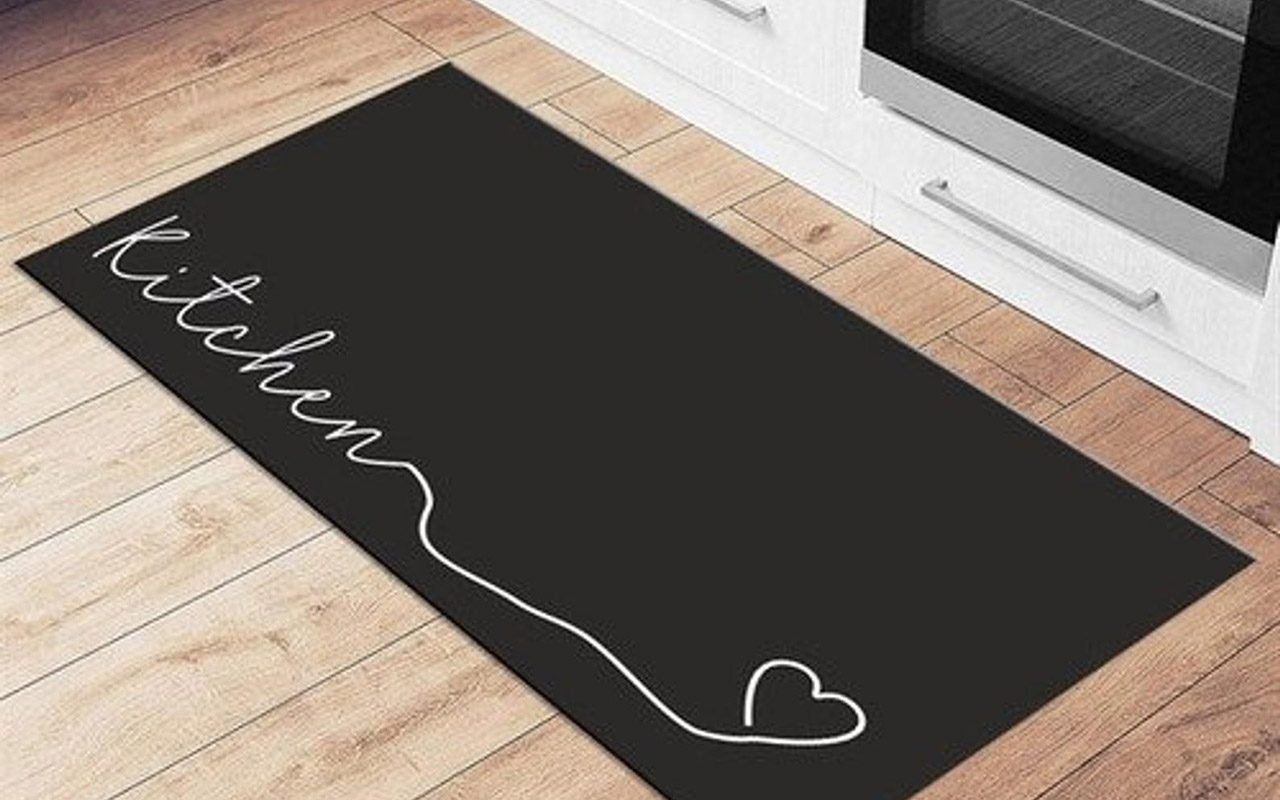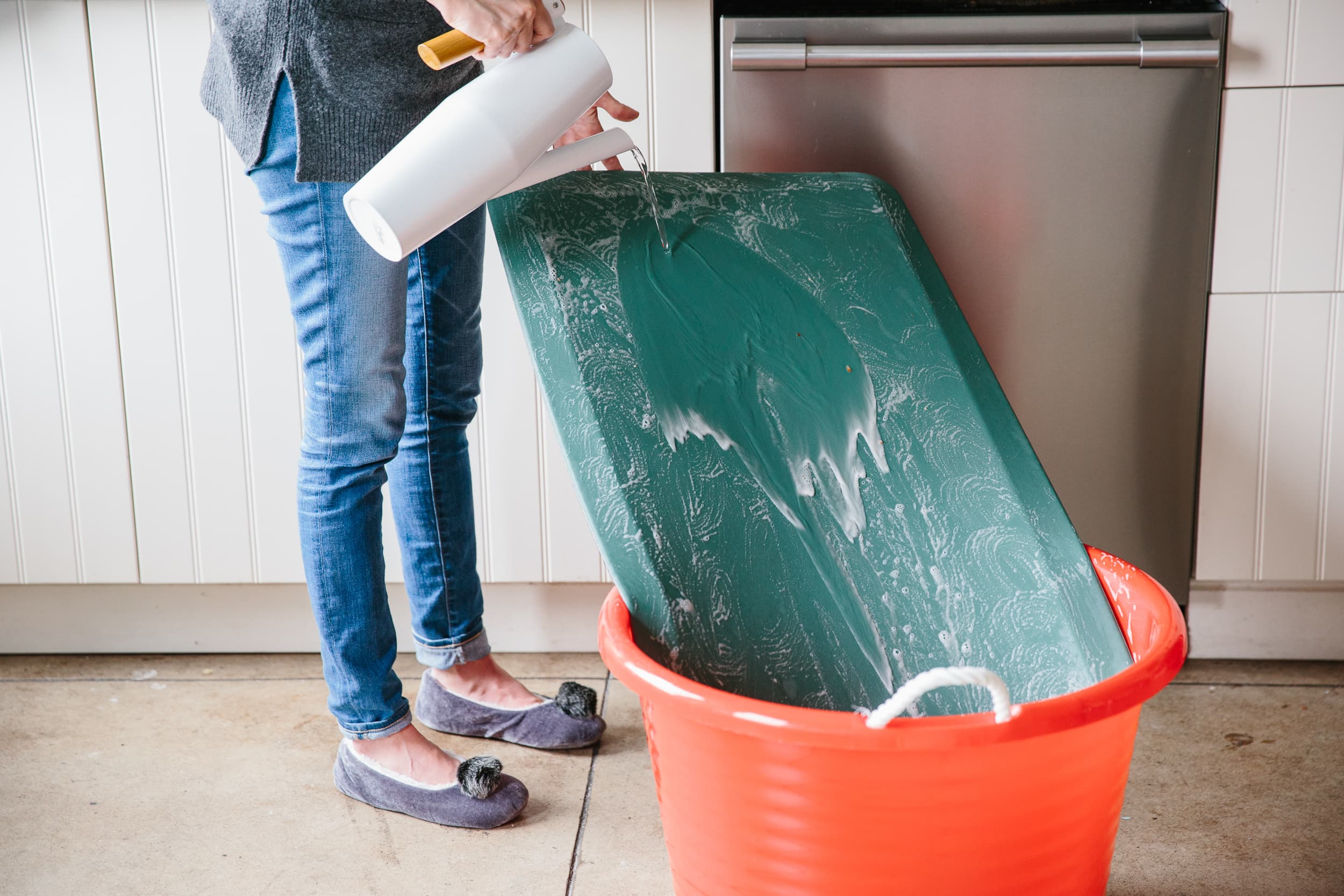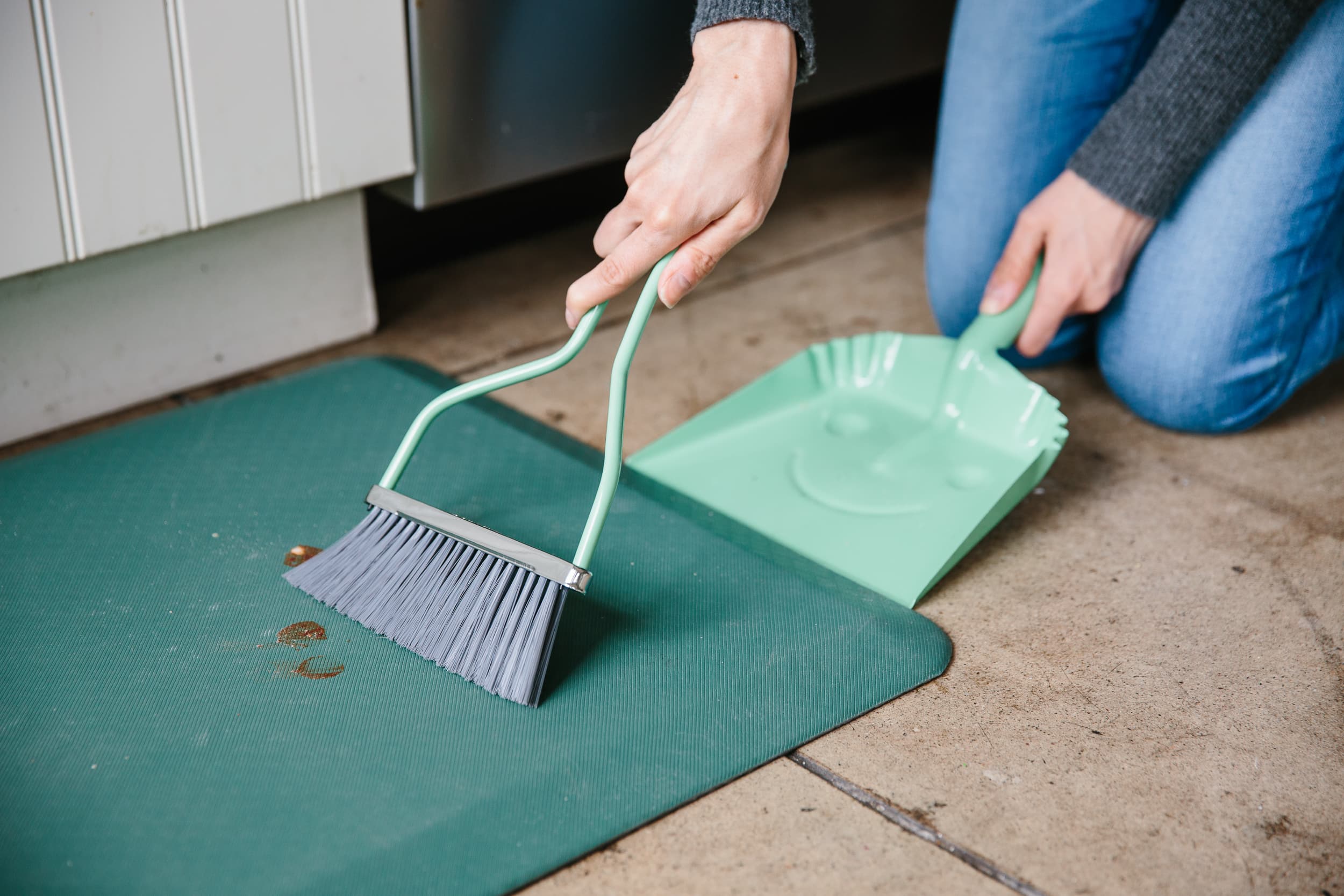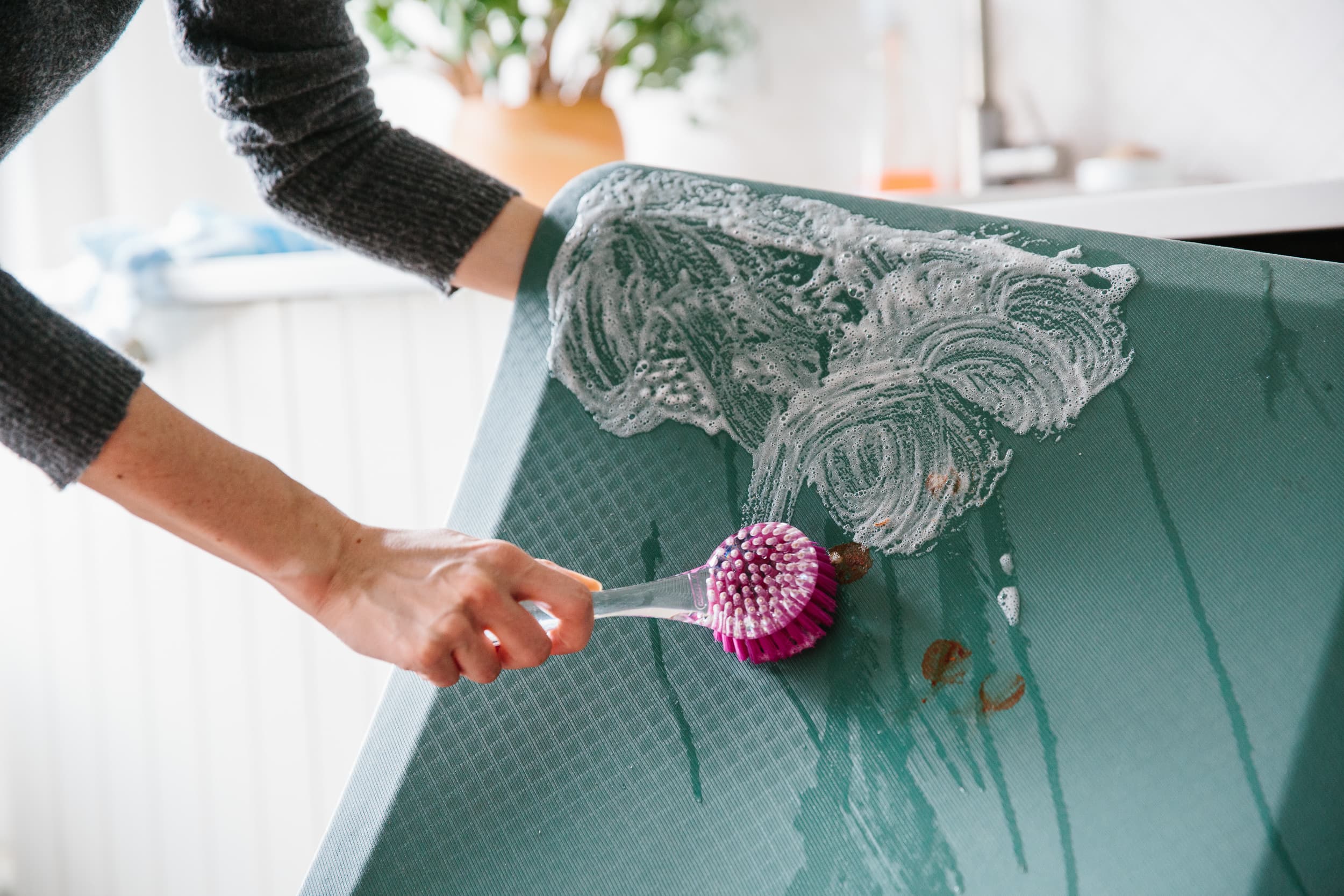I’ve cleaned hundreds of kitchen mats in homes, cafés, and busy test kitchens. I know the pain of greasy footprints, mystery stains, and mats that refuse to dry. Here’s the truth about how to clean kitchen mats: match the method to the material, use simple steps, and set a routine. This guide shows you what works, what to avoid, and how to keep mats fresh, safe, and long-lasting.

Know Your Kitchen Mat: Types And Care Basics
Kitchen mats come in different materials. Each one needs a bit of a different plan.
- Rubber mats are durable and grip well. They handle degreaser and hose-down cleaning.
- Microfiber and fabric mats soak up spills. Many are machine washable.
- Anti-fatigue mats are foam or polyurethane. They need gentle, no-soak cleaning.
- Bamboo or woven mats need light care and quick drying.
- Gel mats need surface cleaning only. Never saturate them.
Quick tip from the field: check the tag or maker’s care page. It often prevents damage and voided warranties.

Daily And Weekly Care Routine
Daily care keeps deep cleaning easy.
- Shake or vacuum the mat each evening. Get rid of crumbs and grit.
- Wipe up grease and spills at once. Use warm water and a drop of dish soap.
- Let the mat dry flat before putting it back.
Weekly care adds a deeper refresh.
- Wash fabric or microfiber mats per label.
- For rubber and foam, scrub the surface with a soft brush and mild cleaner.
- Disinfect high-traffic mats with a safe solution. Rinse well.
Pro tip: I keep two mats per spot. One in use, one drying. No downtime. No musty smell.

Deep Cleaning Methods By Material
Rubber Mats
1) Take the mat outside or to a tub.
2) Rinse with warm water to lift loose dirt.
3) Scrub with a soft brush and a degreasing dish soap.
4) Rinse until water runs clear.
5) Towel dry, then air dry upright. Keep it out of harsh sun.
What to avoid: bleach on dark rubber. It can fade and crack over time.
Microfiber Or Fabric Mats
1) Check the care label.
2) Pre-treat stains with an enzyme spray. Wait 5 to 10 minutes.
3) Machine wash on cold or warm, gentle cycle. Mild detergent.
4) Do not use fabric softener. It reduces absorbency.
5) Air dry flat. Fluff by hand.
If the mat curls, steam it lightly or press with a warm iron if allowed.
Anti-Fatigue Foam Or PU Mats
1) Wipe surface with warm water and mild dish soap.
2) Spot clean grease with a diluted all-purpose cleaner.
3) Rinse cloth and wipe again to remove residue.
4) Dry with a towel and let it air dry flat.
Never soak or pressure wash. Water intrusion can break down the core.
Gel Mats
1) Wipe with a damp cloth and pH-neutral cleaner.
2) Rinse cloth and wipe again.
3) Dry with a towel. Keep edges sealed and intact.
Do not fold or roll tightly. It can stress the gel.
Bamboo Or Woven Mats
1) Vacuum both sides.
2) Wipe with a damp cloth and a drop of mild soap.
3) Dry at once with a towel.
4) Air dry standing to allow airflow.
Avoid soaking. Natural fibers can warp or mold.

Targeted Stain Removal Guide
Grease and oil
- Cover with baking soda. Let sit 10 to 15 minutes.
- Brush off and clean with dish soap. Rinse or wipe clean.
Tomato or sauce stains
- Dab with a mix of one part white vinegar and three parts water.
- Rinse, then wash as usual.
Coffee and tea
- Blot with cold water first.
- Use an oxygen-based stain remover on fabric mats. Rinse well.
Protein stains like milk or egg
- Use an enzyme cleaner. Cold water only at first.
- Wash after the enzyme has time to work.
Adhesive or gum
- Freeze the spot with an ice pack. Scrape gently with a plastic card.
- Clean residue with dish soap.
Real-life note: I once removed a month-old curry stain on microfiber by soaking the spot in oxygen cleaner for 30 minutes, then washing cold. It looked new again.

Source: www.youtube.com
Odor Control And Safe Sanitizing
Odors come from bacteria and trapped moisture. Keep it simple and safe.
- For fabric and microfiber, add a cup of white vinegar to the rinse cycle.
- For rubber and foam, wipe with a diluted disinfectant. Rinse after to avoid residue.
- Sprinkle baking soda on dry mats. Let sit 30 minutes, then vacuum.
- Dry fast. Sunlight helps deodorize, but avoid long UV exposure on rubber and foam.
If odors linger, you may have moisture trapped underneath. Clean the floor under the mat and let both surfaces dry fully.
Drying And Maintenance To Extend Life
Drying makes or breaks a mat.
- Stand rubber mats on edge. Let both sides breathe.
- Air dry fabric flat to prevent stretch or curl.
- Keep mats out of harsh sun for long periods.
- Rotate mats weekly so wear is even.
Maintenance checklist
- Monthly: deep clean based on material.
- Quarterly: check edges and backing for wear.
- Replace if the mat slides, curls, or cracks. Safety first.
Eco-Friendly And Kid/Pet-Safe Cleaning Options
You can clean well without harsh chemicals.
- Warm water and dish soap handle most grease.
- White vinegar reduces odor on fabric mats.
- Baking soda lifts smells and light stains.
- Oxygen-based cleaners brighten without chlorine bleach.
Patch test first on a small hidden area. Even gentle products can affect dyes or finishes.
Safety Tips And Common Mistakes To Avoid
Safety tips:
- Always keep the floor dry under the mat. Wet floors are a slip risk.
- Use non-slip backing or a rug pad designed for your floor type.
- Rinse off any cleaner that leaves residue. Residue can make floors slick.
Mistakes to avoid:
- Do not pressure wash foam or gel mats.
- Do not bleach dark rubber or PU.
- Do not put hot mats on luxury vinyl floors. Heat can mark the finish.
- Do not skip drying time. Trapped moisture leads to odors and mold.
Frequently Asked Questions Of How To Clean Kitchen Mats
Q. Can I Put My Kitchen Mat In The Washing Machine?
Many fabric or microfiber mats are machine washable. Check the label. Use a gentle cycle and mild detergent. Air dry flat.
Q. How Often Should I Deep Clean A Kitchen Mat?
For a home kitchen, do a deep clean once a month. In a busy kitchen, clean weekly. Spot clean spills as they happen.
Q. What Is The Best Way To Remove Grease From A Rubber Mat?
Rinse with warm water. Scrub with dish soap or a mild degreaser. Rinse well and air dry. Avoid harsh solvents.
Q. Why Does My Mat Smell Even After Washing?
Moisture may be trapped. Dry longer, and clean the floor under the mat. Use baking soda or vinegar rinse for odor control.
Q. Is Bleach Safe For Kitchen Mats?
Use caution. It can damage rubber and fade colors. For sanitizing, choose a diluted, mat-safe disinfectant and rinse after.
Q. How Do I Keep My Mat From Sliding?
Use a non-slip rug pad that is safe for your floor. Make sure both the mat and floor are clean and dry before placing.
Q. Can I Dry My Mat In The Sun?
Short sun exposure helps with odor. Avoid long, direct sun on rubber and foam. It can lead to fading and cracking.
Wrap-Up And Next Steps
You can keep kitchen mats clean with simple steps. Match cleaning to the material. Set a daily shake-and-wipe habit. Do a monthly deep clean. Dry well. Your mat will last longer, look better, and stay safe underfoot.
Try one upgrade today: create a two-mat rotation so one can dry while you use the other. Want more tips like this? Subscribe, share your mat type in the comments, and tell me your toughest stain. I’ll help you beat it.
Watch This Video on how to clean kitchen mats
>>> See More Review: How Big Is A Normal Bedroom
